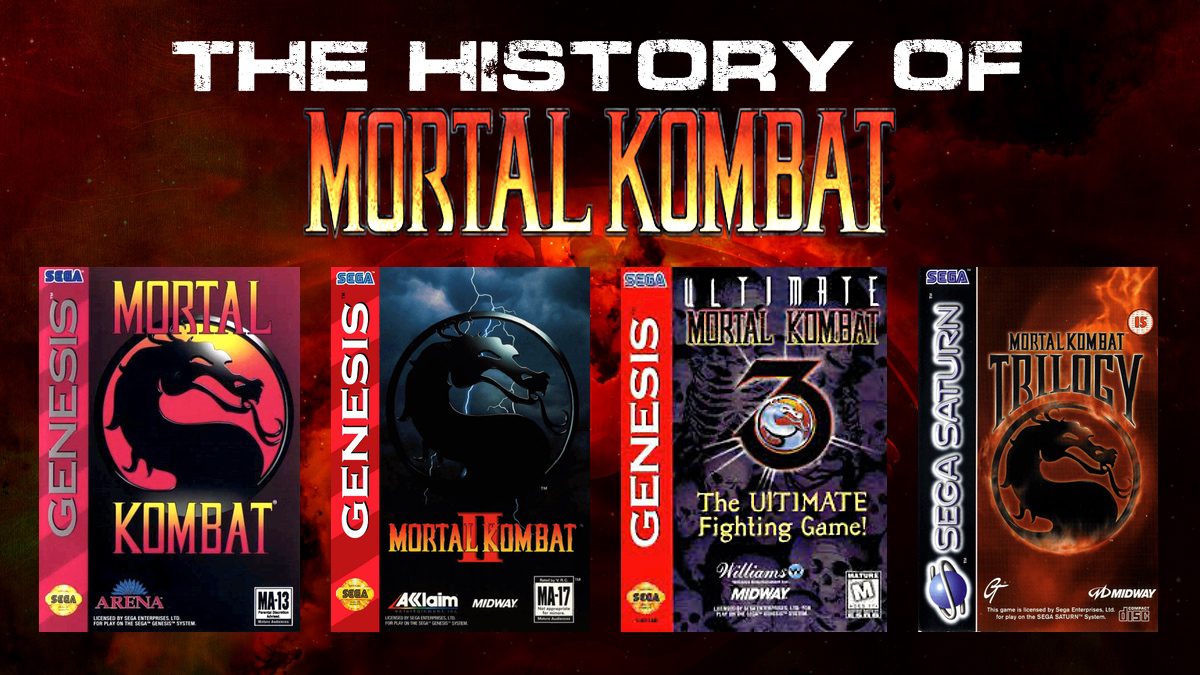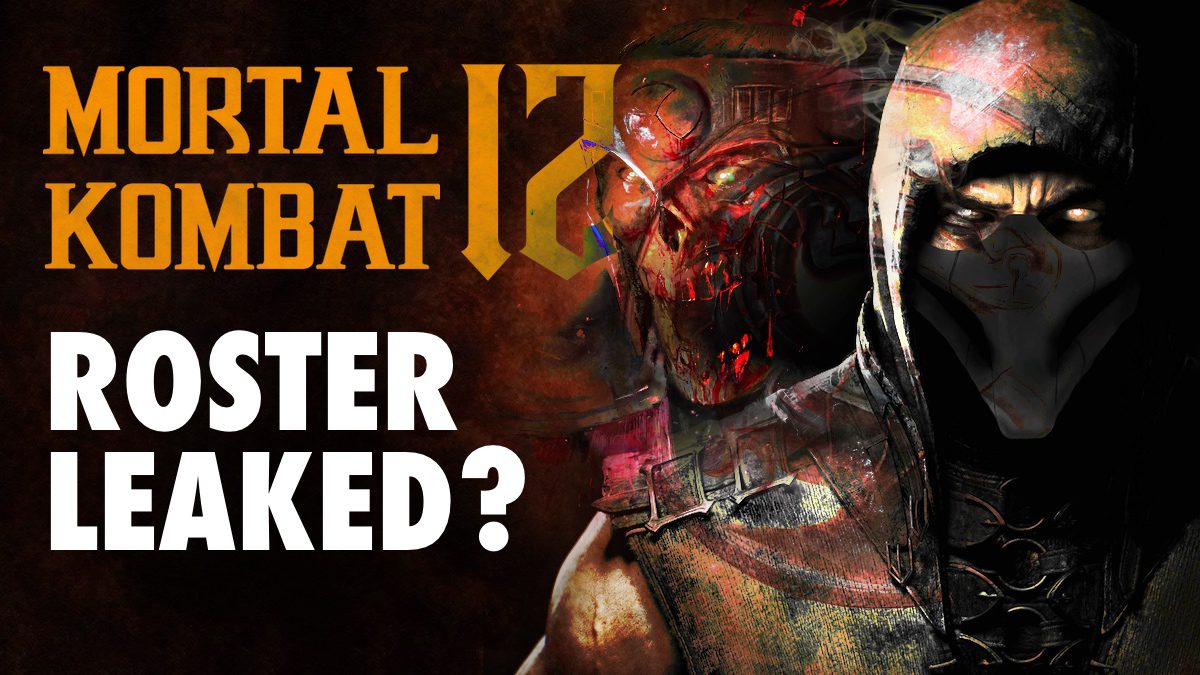
The Mortal Kombat series has been a household name in the video game community for years, known for its bloody and violent gameplay. However, behind the over-the-top costumes and one-liners lies a surprising underdog story. Initially meant to focus on a group of historical Chinese ninjas, the Lin Quay, Mortal Kombat’s beginnings were humble and more ninja-like. However, the game’s creators eventually re-pitched the original idea, and in 1991, the development team of just four people began working on the game.
Mortal Kombat stood out from its contemporaries, thanks to its unique features, including the opportunity for players to use finishing moves to end their opponents. Despite initial doubts, Mortal Kombat became an immediate hit, and its popularity only grew with subsequent releases.
Key Takeaways
- Mortal Kombat’s unique features, including finishing moves, helped it stand out from other fighting games.
- Mortal Kombat’s popularity grew quickly, with subsequent releases becoming commercial successes.
- Mortal Kombat faced controversy and impact on video game ratings, leading to the formation of the ESRB.
Table of Contents
Origins of Mortal Kombat
Initial Concept
Mortal Kombat, the iconic fighting game franchise that has captivated gamers for decades, had humble beginnings that would forever change the landscape of the gaming industry. Created by Ed Boon and John Tobias, Mortal Kombat emerged as a groundbreaking title that pushed boundaries, challenged conventions, and sparked a cultural phenomenon.

The Birth of an Idea: The idea for Mortal Kombat was conceived in the early 1990s when Ed Boon and John Tobias, both talented game developers at Midway Games, sought to create a unique fighting game that would stand out from the crowd. Inspired by the popularity of martial arts movies and arcade fighting games of the time, they envisioned a game that combined intense action with cinematic visuals and an engaging storyline.
The Mortal Kombat series is now a titan of the fighting game genre, but its beginnings were significantly more humble and more ninja-like. According to Daniel Pasina, the actor who originally portrayed Johnny Cage, the game was initially meant to focus on a group of historical Chinese ninjas, the Lin Quay. This was sort of the very first concept of the story. This idea eventually became Shang’s son.

Adapting to Mainstream
John Tobias, then a new employee at Midway Games, took the idea to his boss and Boone. However, the initial pitch wasn’t exactly a success. Boone liked the idea of a fighting game but didn’t think the specific concept would work. They wound up canceling the original idea instead choosing to pursue a mainstream game.
Influence of Jean-Claude Van Damme
Jean-Claude Van Damme was reportedly considered for the game. Casino was reportedly Furious saying, “I gave a bunch of great Kung Fu ideas, and they were now going to give them all to Jean-Claude Van Damme.” Van Damme, of course, declined to do the game, but his influence lived on in Johnny Cage, whose general style bore a strong resemblance to the action star.
Re-Pitching the Original Idea
The original idea was re-pitched, and Midway, seeing the success Capcom had found with Street Fighter 2: The World Warrior, decided it might be worth a shot. In 1991, the project’s development team included just four people: Boone, the sole programmer, Tobias, one of the artists, John Vogel, the other artist, and Dan Borden, the sound designer. The group opted to use real actors to portray the fighters, an unusual choice for the time and certainly not one without its challenges.
The team experimented with every martial art move for about three days, eight hours a day, filming everything to be later used in the actual game. The production was bare bones, and the team was sure this would be a small game and cut corners where they could to stay within budget.

They filmed everything over the course of five days in a space that was essentially a hallway and during that time finalized thousands of details, including finishing moves, catchphrases, and even weapons. Many iconic choices came down to decisions made by the individual actors.
Development of Mortal Kombat
The Development Team
In the early 90s, Midway Games was a small arcade game company with a few successful titles under its belt. In 1991, a small development team of four people, consisting of Ed Boon, John Tobias, John Vogel, and Dan Borden, began working on a new fighting game called Mortal Kombat. The team was tasked with creating a game that could compete with the popular fighting game Street Fighter II.
To bring their vision to life, Boon and Tobias assembled a team of talented artists, programmers, and designers. They employed the use of innovative technology and techniques, including digitizing live actors to create the game’s character sprites. This groundbreaking approach allowed them to capture the fluid movements and detailed animations of the actors, giving Mortal Kombat a unique and realistic visual style.

The team meticulously choreographed fight sequences, capturing each move and strike with precision. These performances were then translated into the game, resulting in characters that moved and fought with a level of authenticity rarely seen in the genre. The attention to detail and dedication to capturing the essence of martial arts contributed to the game’s immersive and visceral gameplay.
Use of Real Actors
The Mortal Kombat development team decided to use real actors to portray the fighters in the game. This was an unusual choice for the time, but it allowed the team to create more realistic and lifelike movements for the characters. According to Daniel Pasina, the actor who originally portrayed Johnny Cage, the team experimented with every martial art move for about three days, eight hours a day, filming everything to be later used in the actual game.

The team filmed everything over the course of five days in a space that was essentially a hallway. The production was bare-bones, and the team cut corners where they could to stay within budget. Despite the challenges, the team finalized thousands of details, including finishing moves, catchphrases, and even weapons. Many iconic choices came down to decisions made by the individual actors.
Creation of Iconic Details
The Mortal Kombat development team wanted to create a game that stood out from its contemporaries, and they achieved this by adding signature finishing moves that were complex, violent, and gleefully gory. According to Ed Boon, he was tired of the cleanliness of other fighting games and insisted that players should have a way to finish their opponents off. The team pitched increasingly over-the-top moves for every character, and everything was finalized.
The team also made other unique choices, such as allowing players to choose between characters with different fighting styles and giving players the opportunity to fight in different locations. Unlike many other fighting games at the time, which ended every match with the knocked-out competitor, Mortal Kombat gave players the opportunity to perform finishing moves on their opponents.
In conclusion, the Mortal Kombat development team’s use of real actors, signature finishing moves, and unique character choices helped the game to stand out from its contemporaries and become a cultural phenomenon.
Mortal Kombat’s Unique Features
Mortal Kombat has been a staple of the video game community for decades, known for its bloody, violent gameplay and over-the-top characters. However, behind the silly costumes and one-liners lies a unique set of features that set it apart from other fighting games.
One of the most significant features that made Mortal Kombat stand out was its use of real actors to portray the fighters. This was an unusual choice for the time, but it allowed the team to create more realistic and detailed character animations. The team experimented with every martial art move for about three days, filming everything to be later used in the actual game.

Another unique feature of Mortal Kombat was its signature finishing moves. Unlike many other fighting games at the time, which ended every match with the knocked-out competitor, Mortal Kombat gave players the opportunity to perform complex, violent, and gory finishing moves.
This was thanks to the team’s creative director, Ed Boon, who was tired of the cleanliness of other fighting games and insisted that players should have a way to finish their opponents off.

The game’s gore and violence sparked controversy and led to a moral panic around violence in video games. However, Mortal Kombat’s popularity only grew, and the team continued to innovate with each new release.
Mortal Kombat 2 introduced alternate lighthearted fatalities and brand new character animations, while Mortal Kombat 3 brought chain combos, animalities, and combat codes. The game’s visuals also evolved, with Mortal Kombat 3 using a more muted color palette and heavily digitized character sprites.
Overall, Mortal Kombat’s unique features, including the use of real actors, signature finishing moves, and constant innovation, have helped it become a titan of the fighting game genre.
Arcade Debut and Reception
In 1992, Midway Games released Mortal Kombat in arcades. The game was developed by a team of four people, including John Tobias, one of the artists, Ed Boon, the sole programmer, Dan Borden, the sound designer, and John Vogel, the other artist. The game used real actors to portray the fighters, which was an unusual choice for the time. The team experimented with every martial art move for about three days, eight hours a day, filming everything to be later used in the actual game.
Mortal Kombat stood out from its contemporaries, not just because of its costuming choices but also because of its signature finishing moves. Unlike many other fighting games at the time, which ended every match with the knocked-out competitor, Mortal Kombat gave players the opportunity to perform complex, violent, and gleefully gory finishing moves, a spectacle for arcade-goers everywhere to laugh and wince over.

This was thanks to Ed Boon, who was tired of the cleanliness of other fighting games and insisted that players should have a way to finish their opponents off.
The game’s popularity was immediate and explosive, and it soon became clear that the initial 200 cabinet run simply wasn’t enough. Fans wanted more gore, more Easter eggs, and more Mortal Kombat, so Midway started looking at putting MK in people’s homes. The home version published by Acclaim had sold over 6 million copies.
However, Mortal Kombat faced criticism for its violent content, leading to a highly publicized professional hearing in 1993 led by Senator Joe Lieberman. Despite the controversy, Mortal Kombat was a hit, and it became a cultural phenomenon.
Transition to Home Consoles
After the success of Mortal Kombat in arcades, the development team at Midway Games decided to bring the game to home consoles. The first home console version of Mortal Kombat was released for the Super Nintendo Entertainment System (SNES) and Sega Genesis in 1993.
However, due to Nintendo’s strict anti-gore policy, the SNES version of the game had toned-down violence with gray sweat instead of blood. In contrast, the Sega Genesis version maintained the game’s signature violence, resulting in it outselling the SNES version five to one.

Despite the controversy surrounding the game’s violence, Mortal Kombat’s popularity continued to grow, leading to its release on other home consoles, including the PlayStation, Sega Saturn, Game Gear, and Game Boy. The PlayStation version of the game was virtually identical to the arcade version, making it a popular choice for gamers who wanted to experience the game’s full gore.
With the success of the home console versions of Mortal Kombat, Midway Games continued to release updated versions of the game, including Ultimate Mortal Kombat 3 and Mortal Kombat Trilogy. These updated versions featured new characters, altered gameplay systems, and additional features, making them popular among fans of the franchise.
Overall, the transition to home consoles allowed Mortal Kombat to reach a wider audience, cementing its status as a cultural phenomenon. Despite the controversy surrounding its violence, the game’s popularity continued to grow, leading to numerous sequels and spin-offs over the years.
Controversy and Impact on Video Game Ratings
Mortal Kombat’s signature gore and violence were both a selling point and a source of controversy. The game’s finishing moves, or fatalities, were complex, violent, and gory, making them a spectacle for arcade goers everywhere to laugh and wince over. However, this also led to the game being criticized for its explicit content, particularly in the wake of a moral panic around violence in video games.
In 1993, Senator Joe Lieberman led the charge against Mortal Kombat, leading to a highly publicized professional hearing. While Lieberman admitted that banning violent video games outright would be a First Amendment violation, it was clear he was out for non-pixelated blood. In response to the hearings, the gaming industry formed the self-regulatory Entertainment Software Rating Board (ESRB), so gamers everywhere would finally have an easy way to figure out that Mortal Kombat and Night Trap weren’t meant for kids.
Despite the controversy, Mortal Kombat’s impact on video game ratings was significant. The ESRB’s creation was a direct result of the outcry over Mortal Kombat’s violence, and it paved the way for similar rating systems in other countries. Today, video games are rated similarly to movies, with labels indicating the game’s content, such as “E” for Everyone, “T” for Teen, and “M” for Mature.
Overall, Mortal Kombat’s impact on video game ratings cannot be overstated. While it was criticized for its explicit content, it also led to the creation of a rating system that has helped parents and gamers make informed decisions about the games they play.
Success and Critic Reviews
Mortal Kombat was an instant hit when it was released in 1992, and its popularity only continued to grow with subsequent releases. The game’s unique finishing moves, gory visuals, and real actor portrayals of the fighters set it apart from other fighting games of the time. It quickly became a cultural phenomenon, with arcade machines drawing crowds and the home console version selling over 6 million copies.
Despite mixed reviews from critics, Mortal Kombat’s success was undeniable. It was the highest-grossing arcade game of 1992 and made over $50 million in its first week of home release. Its sequels, Mortal Kombat 2 and Mortal Kombat 3, were also commercial successes and cultural phenomena, with the former becoming the highest-grossing arcade game of 1993.
While some critics took issue with the inclusion of less interesting characters and the game’s bugs, Mortal Kombat’s unique style and gameplay mechanics were praised. The game’s use of real actors and the inclusion of finishing moves added a level of realism and excitement that other fighting games lacked. The games’ visuals, sound design, and music were also praised.
Overall, Mortal Kombat’s success and critical reception solidified its place as a staple in the video game community. Its influence can still be seen in modern fighting games, and the franchise continues to release new games and content to this day.
Consideration for a Sequel
As the Mortal Kombat series continued to grow in popularity, fans eagerly awaited the release of each new installment. With the success of Mortal Kombat 3 and its subsequent updates, many were left wondering what the future held for the franchise.
The development team at Midway Games was certainly considering the possibility of a sequel, but they knew that they would have to tread carefully. The controversy surrounding violence in video games had only continued to grow, and many were calling for stricter regulations on the industry.
Despite these concerns, Midway ultimately decided to move forward with a new Mortal Kombat game. They knew that they would have to find a way to address the concerns of critics and parents while still delivering the gory, over-the-top gameplay that fans had come to expect.
One of the key considerations for a sequel was the inclusion of new characters. While the original Mortal Kombat had focused on a small group of fighters, subsequent games had introduced a wide range of new combatants with unique moves and abilities. For a new game to be successful, it would need to continue this trend of innovation and introduce even more memorable characters.
Another important consideration was the game’s visuals. While the digitized sprites of the earlier games had been groundbreaking at the time, they were starting to look dated compared to the 3D graphics of other fighting games. Midway knew that they would need to invest in new technology and talent in order to create a game that looked and felt modern.
Ultimately, the development team at Midway would go on to create several new Mortal Kombat games, each with its own unique innovations and controversies. But the considerations that went into the creation of these games would continue to shape the franchise for years to come.
Mortal Kombat 2
Mortal Kombat 2 was released in 1993, and it was an instant hit. The game was darker and funnier than its predecessor, with new characters, alternate light-hearted fatalities, and improved mechanics. The game was ahead of its time in many ways, but it also faced some issues during development.
The first version of Mortal Kombat 2 was effectively a public beta test, riddled with bugs and visibly unfinished. It took three painful revisions before the game was truly done, with a finalized version that had fewer bugs releasing in January 1994.

Despite the development issues, Mortal Kombat 2 became a commercial success and a cultural phenomenon. It received overwhelmingly positive reviews from critics, and it was the highest-grossing arcade game of the year.
Mortal Kombat 2, holds a special place in gaming history as one of the most influential fighting games of all time. Building upon the success of its predecessor, Mortal Kombat, this iconic sequel introduced groundbreaking features, expanded the roster of characters, and further pushed the boundaries of the fighting game genre.

The Game introduced several new fighters to the series, expanding the roster and further establishing the game’s diverse and memorable character lineup. Fan favorites such as Kitana, Mileena, Jax, Baraka, and Kung Lao made their debut in Mortal Kombat 2, each bringing their unique fighting styles, special moves, and captivating backstories. These characters quickly became staples of the franchise and played pivotal roles in shaping the Mortal Kombat universe.
Mortal Kombat 3 and Its Updates
Mortal Kombat 3 hit the arcades in April 1995 and brought some brand new moves and features to the series. It introduced chain combos, animalities, a run button, and combat codes which players could enter before matches to unlock additional features like health handicaps and secret character battles.

MK3 had notably different visuals from its predecessors thanks to a more muted color palette, heavily digitized character sprites, and backgrounds created using pre-rendered 3D graphics. Additionally, though the previous two games had an aesthetic that leaned heavily on East Asian influences, MK3 went Western. There are so many robots in this game, but people loved it.
After a massive marketing campaign, MK3 landed in North American arcades. It wasn’t long before it was ported to the Genesis, the SNES, and the newest console wars combatant, the PlayStation, thanks to a deal between Sony and Midway. The PlayStation version was basically indistinguishable from the arcade version, making that sweet 32-bit violence all the more accessible to gamers everywhere.

Despite its commercial success, critics had plenty of complaints about MK3. Many took issue with the inclusion of less interesting characters in lieu of fan favorites like Kitana and Scorpion. This problem was readily resolved with the release of Ultimate Mortal Kombat 3, a standalone update to MK3 with an altered gameplay system.
A second and final update, 1996’s Mortal Kombat Trilogy, was released shortly after that, re-establishing even more beloved characters. It included all the characters from the previous games, as well as some new ones, and brought back classic stages and music. Overall, Mortal Kombat 3 and its updates continued to push the boundaries of the fighting game genre with new moves, features, and characters.
Commercial Success and Critic Reactions
Mortal Kombat became a commercial success and a cultural phenomenon. The home version of the first Mortal Kombat game published by Acclaim had sold over 6 million copies. Mortal Kombat 2 was darker and funnier than its predecessor with Titan mechanics, alternate lighthearted fatalities, and brand new character animations. In spite of the development issues, MK2 became a commercial success and a cultural phenomenon.
It received overwhelmingly positive reviews from critics, and it was the highest-grossing arcade game of the year. In the first week of its home release, it made over $50 million, which according to Acclaim was the largest introduction of a video game in history. It even outsold the opening week in box office of major movies at the time like Forrest Gump, True Lies, and The Lion King.
Mortal Kombat 3 hit the arcades in 1995 and brought some brand new moves. It introduced chain combos to this series, animalities, a run button which allowed players to dash toward their opponent, and combat codes which players could enter before matches to unlock additional features like health handicaps and secret character battles.

Mortal Kombat 3 had notably different visuals from its predecessors thanks to a more muted color palette, heavily digitized character sprites, and backgrounds created using pre-rendered 2.5/3D Effects. The game received mixed reviews from critics, with some taking issue with the inclusion of less interesting characters. However, the game did well on a commercial level.
It was ported to various consoles, including the Sega Saturn, the Game Gear, and the Game Boy. The Game Boy version, in spite of being the first and only M-rated Game Boy title, was missing huge chunks of the game, including six of the original 15 fighters.

The problem was readily resolved with the release of Ultimate Mortal Kombat 3, a standalone update to MK3 with an altered gameplay system. A second and final update, 1996’s Mortal Kombat Trilogy, was released shortly after that, re-establishing even more beloved characters.
…END of PART 1! Part 2 coming soon!







One Comment